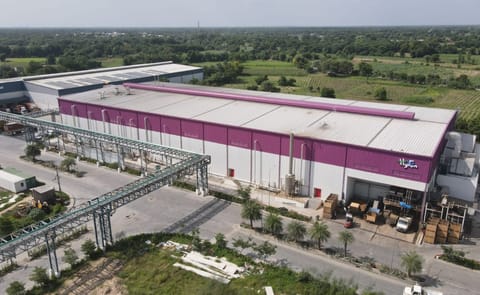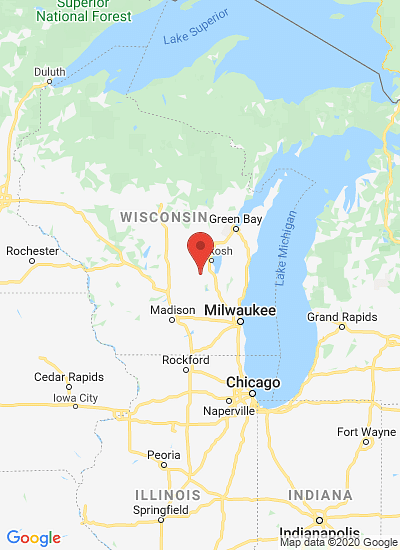Sustainable Packaging
Selecting packaging, what makes sense: Bio-based? Recyclable? Biodegradable? Compostable?

Flexible packaging sustainability is a hot agenda topic, and with rapidly advancing technology the options are starting to grow. That said, there is still a sustainability collision point of want vs. reality for brand owners and consumers.
Plastic waste is a global dilemma and legitimate concern. Here are some alarming facts:
Bioplastics
This term refers to plastics that are bio-based, biodegradable, or in some cases both. The feedstocks used to create bioplastics are non-fossil-based. They are created completely with renewable feedstocks derived from biomass, generally cellulose or stems from corn or sugar cane, for example.
While production of bioplastics is growing, it accounted for only .005% of the total global plastic production in 2020. The future growth projections are very minimal and won’t be a game-changer anytime soon.
Biodegradable
Biodegradable plastics come as fossil or biomass feedstocks. They are designed to degrade under certain environmental conditions when they come in contact with specific bacteria or microbes. When they degrade, the byproducts are water, biomass, CO2, or methane depending on conditions.
Plastics being labeled as biodegradable is vague at best since it doesn’t specify a time or environment to degrade.
On a positive note, recent developments in biodegradable additives, backed by ASTM testing, have led to faster and more predictable degradation timing for plastics to fully break down in landfills. There are advantages to fossil-based biodegradable plastics as compared to bio-based plastics and other sustainable packaging options, including:
Compostable
Compostable packaging is really a subset of biodegradable. In the correct conditions, it is also broken down by microbes into CO2, water, and biomass. In order to be recognized as compostable, 90% of the plastic component must break down into fragments less than 2mm within 12 weeks.
There are several challenges to using compostable plastic packaging. The largest to overcome are:
Recyclable
There has been a surge in interest and usage of in-store drop-off (SDO), or Recycle Ready, plastic packaging. The burden is on the end consumers to rinse and clean plastic food packaging and then drop it off at one of +32,000 collection sites across the U.S.
The material is limited to PE-based packaging that is mechanically recycled primarily for synthetic lumber or shopping bags.
The future for the recycling of plastic packaging is headed towards chemical recycling. This emerging, closed-loop technology will take multi-layered packaging materials and allow processors to break them down into the original polymer chains. From there the separated chemicals are processed back into virgin quality resin to be used again.
What is the best solution for today?
There is no perfect path but we must start somewhere, and there are some positive options. Recycle Ready and landfill biodegradable packaging options are here and ready to go. The cost to use either will be higher than standard materials, but the cost-benefit leans towards landfill biodegradable. Here’s why:
Plastic waste is a global dilemma and legitimate concern. Here are some alarming facts:
- There are nearly 400 million tons of plastic produced globally every year.
- 79% of all plastic ever produced has ended up in landfills or as litter in the natural environment.
- Only 9% of the plastic waste produced globally in the last six decades has ever been recycled.
Bioplastics
This term refers to plastics that are bio-based, biodegradable, or in some cases both. The feedstocks used to create bioplastics are non-fossil-based. They are created completely with renewable feedstocks derived from biomass, generally cellulose or stems from corn or sugar cane, for example.
While production of bioplastics is growing, it accounted for only .005% of the total global plastic production in 2020. The future growth projections are very minimal and won’t be a game-changer anytime soon.
Biodegradable
Biodegradable plastics come as fossil or biomass feedstocks. They are designed to degrade under certain environmental conditions when they come in contact with specific bacteria or microbes. When they degrade, the byproducts are water, biomass, CO2, or methane depending on conditions.
Plastics being labeled as biodegradable is vague at best since it doesn’t specify a time or environment to degrade.
On a positive note, recent developments in biodegradable additives, backed by ASTM testing, have led to faster and more predictable degradation timing for plastics to fully break down in landfills. There are advantages to fossil-based biodegradable plastics as compared to bio-based plastics and other sustainable packaging options, including:
- The overall cost is lower than compostable or recyclable.
- The option meets consumers where they are today with handling packaging waste.
- The biogas byproduct at landfills is a renewable energy source being used today.
Compostable
Compostable packaging is really a subset of biodegradable. In the correct conditions, it is also broken down by microbes into CO2, water, and biomass. In order to be recognized as compostable, 90% of the plastic component must break down into fragments less than 2mm within 12 weeks.
There are several challenges to using compostable plastic packaging. The largest to overcome are:
- At-home compostable plastics are very difficult to make, process, and are very expensive.
- There are few to no at-home compostable packaging options validated by certification bodies with market authority.
- There are very few commercial composting facilities that accept packaging materials in the U.S., and compostable packaging does not work in landfill environments.
Recyclable
There has been a surge in interest and usage of in-store drop-off (SDO), or Recycle Ready, plastic packaging. The burden is on the end consumers to rinse and clean plastic food packaging and then drop it off at one of +32,000 collection sites across the U.S.
The material is limited to PE-based packaging that is mechanically recycled primarily for synthetic lumber or shopping bags.
The future for the recycling of plastic packaging is headed towards chemical recycling. This emerging, closed-loop technology will take multi-layered packaging materials and allow processors to break them down into the original polymer chains. From there the separated chemicals are processed back into virgin quality resin to be used again.
What is the best solution for today?
There is no perfect path but we must start somewhere, and there are some positive options. Recycle Ready and landfill biodegradable packaging options are here and ready to go. The cost to use either will be higher than standard materials, but the cost-benefit leans towards landfill biodegradable. Here’s why:
- History has shown that 79% of plastic made each year goes to landfills and only 9% gets recycled.
- The discarded biodegradable film breaks down to include renewable biogas that is being scavenged and used by several thousand landfills across the U.S. today. The data is available here:https://www.epa.gov/lmop/landfill-gas-energy-project-data
- You could potentially deliver both options to the consumer by using a biodegradable PE/PE structure. The bio additive has zero negative impact on the process of mechanical recycled materials.
Like to receive news like this by email? Join and Subscribe!
Get the latest potato industry news straight to your WhatsApp. Join the PotatoPro WhatsApp Community!
Highlighted Company
Sponsored Content
Sponsored Content
Sponsored Content
Sponsored Content











